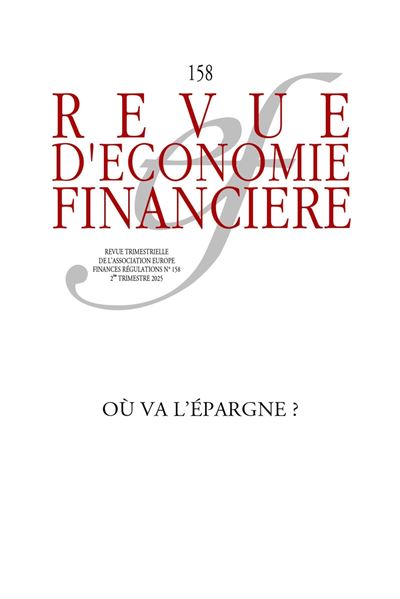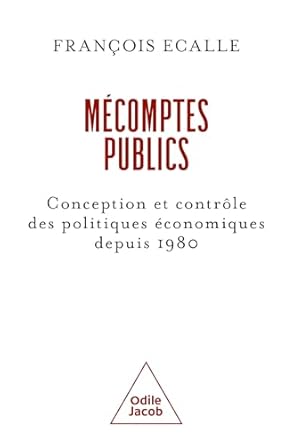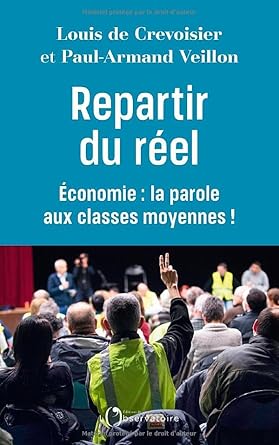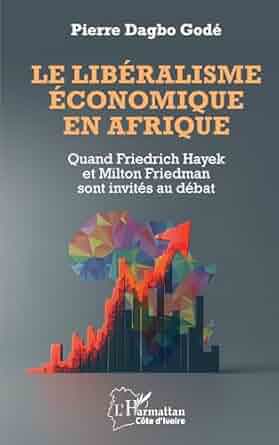The author signs with Ainsi va la France: Manifeste libéral an incisive diagnosis of the ills that paralyze France. Carried by a lively pen, with sometimes pamphleteering accents, tempered by the clinical and concrete analysis of a local practitioner, he traces a clear path to avert this decline. Beginning his demonstration by focusing on “seeing what we see”, as Péguy wrote, the author draws a twilight observation. France, once a beacon of the Enlightenment, is withering under a centralized, hypertrophied state, captive to an out-of-control debt. Its republican universalism is buckling under the blows of a separatist communitarianism, fueled by mass immigration. The nation fails to guarantee the absolute rights of the social pact: public order, the sister of freedom, is undermined by a criminal policy deemed complacent; public education is lost in wokism, to the detriment of basic learning; entrepreneurship is asphyxiated by hypernormativity and crushing production taxes; the competitiveness of agriculture and industries is hampered by punitive technocratic environmentalism, erratic energy policy and Kafkaesque administration. Having made this observation, the author sets out to draw up a recovery plan for the country. He calls for the modernization of the state through bold decentralization, based on subsidiarity, where mayors, artisans of reality, become levers of innovation. An implacable fight against delinquency and Islamism with a return to assimilationism is advocated. He calls for the revitalization of culture and education to reconnect with universal values, an antidote to identity tensions. He pleads for a civic leap, which requires reforms to save the social pact weakened by a health system in crisis, a declining demography and a school collapse: partial capitalization of pensions, overhaul of unemployment insurance, natalist policy, and a school refocused on fundamental knowledge, in opposition to wokism and racialism, scourges of a “decivilization” that the author fights with obstinacy. He encourages an ecological market economy, with nuclear power, an essentially carbon-free energy, as a strategic pivot, and sustainable and competitive agriculture, freed from absurd regulatory rigidities. He advocates an industrial reconquest in the automotive, space and AI sectors, made possible by a reduction in public spending and a massive reduction in production taxes. His manifesto continues with a partisan analysis of the 2024 European elections, marked by the rise of the National Rally and the resilience of the Republican right led by François-Xavier Bellamy, which led the President of the Republic to dissolve the National Assembly. However, in a France often resistant to change, if his observation is shared by the majority of commentators and public opinion, his vision, radical in the etymological sense, could come up against the administrative technostructure and intermediary bodies, with unions at the forefront. We are then entitled to question the improbable adherence to this ambitious project by a high administration whose ethics of conviction risks crumbling in the face of the demands of the ethics of responsibility dear to Max Weber. David Lisnard, born in 1969 in Limoges and a graduate of Sciences Po Bordeaux, is a French politician and member of the Republicans. Founder of the Nouvelle Énergie movement and mayor of Cannes since 2014, he has been president of the Association of Mayors of France since 2021. Yoann Lopez
Yannick COULON, Finance comportementale et gestion du patrimoine. Guide de la finance comportementale à l’usage des professionnels du patrimoine, Eds Arnaud Franel, 2025, 169 pages.
The author answers questions shared by the French in need of investment of their savings in an uncertain financial market, but also by their banking or independent advisers, faced with the development of Artificial Intelligence. His latest book focuses on behavioral finance, which introduces the psychology of actors in financial decisions, and wealth management, which has become difficult due to the diversification of types of transactions and financial products. He recalls the fundamentals of classical finance, based on the rationality of investors, on the notion of fundamental value, and on the principle of market efficiency (defended by Fama), then he poses the hypotheses of behavioral finance, based on the (relative) irrationality of the actors, the notion of market value, and the sub-efficiency of the market (supported by Minsky and Thaler). After explaining the main models of classical and behavioral finance, Yannick Coulon analyzes at length, after Tversky and Kahneman, the multiple psychological biases – perceptual, cognitive, and emotional – as well as collective, which affect the arbitrations of investors and their advisers. He demonstrates the value of active and passive portfolio management. He shows the limits of AI management and graphical analysis. He recalls the regulatory framework for financial investments (MIFID 1 and 2) and real estate. The book is accompanied by quotes, diagrams, tests, and illuminating examples. The reader will regret that it does not sufficiently explore the issues related to structured products and crypto-assets. The author has a long experience as a banker and is currently a professor in a management school. Jean-Jacques Pluchart
Patrick ARTUS et Marie-Paule VIRARD. Quelle France en 2050 ? – 208 pages, Eds Odile Jacob, 2025
The authors have maintained their editorial commitment to presenting facts, studies and commentary without “complacency”! “Pessimism is mood; optimism is will”; here, pessimism is intelligence and unfortunately convincing, optimism is necessity, otherwise the sustainability of our economic and social models is not assured! Faced with the threat of downgrading, will France and Europe be able to keep up with the American, Chinese or Indian economies? Without divulging the conclusion, the book offers a few keys to ensure that we don’t fall too far behind on the Kantian theme: what are we allowed to hope for? For the French, it’s a question of taking up six major challenges: demographic ageing, the fragmentation of the world, the energy transition (and not the ecological transition…), the battle of savings, not forgetting the upheavals associated with the transition from an economy of abundance to one of scarcity. Ageing is on the rise, and is associated with a decline in productivity gains, a structural increase in inflation, and a lasting imbalance in public finances. The challenge is therefore to prevent ageing from weighing too heavily on long-term growth, and hence on people’s standard of living. The fragmentation of the world is leading to a more expensive and less efficient economy, which will primarily affect emerging countries; France and other developed countries should adapt to this new situation by maintaining sufficient interdependence. To maintain its industrial base in 2050, Europe, and France in particular, will have to complete its cultural transformation and mobilize national and mutualized financial resources, and above all private savings, either voluntarily or “forced” (compulsory borrowing and/or taxation). To mobilize long-term savings, it will be necessary to avoid public deficits aimed at stimulating consumption, to avoid shortening the average maturity of financial assets, to avoid reducing the degree of risk on these assets, to avoid encouraging the use of savings for consumption, and to favor, through economic policy, any measure favorable to increasing incomes and therefore available savings. These recommendations should lead to a different sharing of value from that experienced since the 1980s. Similarly, for the energy transition to take place as smoothly as possible, “we need to move away from the neo-liberal model, and get companies and their shareholders to accept a relative reduction in the return on their equity”. “All economic agents are going to have to adjust their priorities and behavior”, as “the transition promises to be difficult for everyone”. Decision-makers must make an effort to convince the public that inaction will have an economic and, above all, a social cost that justifies efforts now and massive investment to found a new, solid and fairer growth model; thus rejecting any growth model that leads to the mortal attrition of the most fragile economic agents. The last two chapters of the book are devoted to the future of France and the eurozone: how to escape the trap of weak growth, and how to devise an economic, monetary (the ECB) and budgetary policy capable of changing the situation? In terms of growth, we need to increase the number of hours worked by the entire population (122 hours less than the European average), by increasing the working week (but only one hour behind Germany) and reducing the number of work stoppages (twice as high in France as in Germany). Then, we need to increase the employment rate through training and incentives; since we’re dealing with poorly trained people, the economy’s productivity gains will be delayed. Finally, technological innovation will require substantial investment, which can be financed by the zone’s savings, provided these do not go to the United States and can circulate smoothly between the countries in the zone. Last but not least: the Commission’s economic policy and the ECB’s monetary policy. The solutions put forward are “disruptive”, to borrow a term from the authors. Better “a disruptive policy than a dead one”! The “classic” criteria are obsolete, as they still fail to differentiate between operating and capital expenditure, and do not sufficiently take into account the notion of cycles, contrary to the decisions taken during the COVID crisis. The authors even consider that such tightening would lead to Europe’s definitive stalling. What is needed, therefore, is flexibility guided by clear industrial strategies, and a renewal of Community loans. As for monetary policy, “it is ineffective”. At the time of writing, the authors considered that the fall in inflation was the result of a drop in energy and raw material prices, but that inflation remained at around 3.5%, a level that would be reached again in 2025. This summer, it has to be said that this forecast has not been borne out. But see…. In any case, the authors question the 2% “dogma”, considering that the target should be closer to the “natural rate” and vary according to economic cycles (Friedman versus Hayek!). Certainly, to get out of the current and future slump, we need to recreate a negative real interest curve, enabling us, among other things, to maintain or even increase deficits without increasing debt; to “rewrite a few articles of the Maastricht Treaty”; to pursue an “expansionary monetary policy” and, finally, to promote the establishment of a complete “Banking Union” and “Savings and Investment Union”. It’s interesting to note that the economic proposals on wealth creation, mobilizing savings and financing investment in France are to be found in the “Bayrou plan” of summer 2025 (which lacks an element on pensions for well-known political reasons), and that the monetary guidelines are being taken by the government to Brussels and Frankfurt. But, as we can see, the priorities needed in France are not necessarily acceptable in Germany, the Netherlands or Italy. Like its predecessors, this well-documented book is a useful contribution to the debate; it is even “in tune with the times”, which is not often the case in a complicated subject. All that remains is for politicians to identify the possible paths. “Somebody would have said: ”What a task! Column written by Dominique Chesneau
Jean-Philippe DENIS, Aude DEVILLE et Olivier MEIER, L’enseignement supérieur en transition : propositions pour l’avenir, EMS Eds, 2024, ,328 pages.
The book, written by French-speaking university lecturers and researchers, traces the multiple aspects of the profound transformation of French universities and private institutions, observed over the past two decades, particularly in the field of management sciences, which make up nearly 10% of higher education students. These changes have made it possible to align French institutions and procedures with European directives and certain international practices. They intervened in particular under the effect of the new LMD (Bachelor’s, Master’s, Doctorate) curriculum in 2002, the law relating to the freedoms and responsibilities of universities (LRU) in 2007, the future investment programs in 2010, the 2013 law promoting groupings and cooperation between universities within the framework of COMUE or EPE, and more recently, measures favorable to MOOC (Massive Open Online Courses) and the research programming law (LPR) in 2020. The Old Public Administration (OPA) analyzed by Bourdieu more than a century ago has given way to New Public Management (NPM), then to New Public Governance (NPG), Public Value Management (PVM), Austerity Public Management (APM), and Sustainability Management (SM) respectful of ESG (Environmental Social Governance) principles. This transformation was marked by debates between all stakeholders, in the spirit of Critical Management Studies. The authors strive to answer the main questions raised by the application of this uninterrupted wave of reforms, and in particular, by the rapid growth of the student population. They are particularly concerned about the rise in enrollment – now the majority in the management discipline – in the 200 or so private institutions, whose level they consider to be increasingly unequal. While some of them have obtained international labels, only 65 universities and schools benefit from targeted training and diplomas recognized by the State. The authors criticize the current procedures for evaluating these schools and make recommendations to avoid the disappointment of their students and their future employers. The authors also question the conditions of good governance of academic research. They recall that the latter requires the freedom and expertise of the researcher, but also favorable political and financial conditions. It should not be exclusively “governed by numbers” (quantitative research and bibliometrics), by “academic bureaucracy”, by English as the “language of science”, by American journals, and/or by the search for corporate performance. Jean-Jacques PLUCHART
Fatou DIOP, Mbaye Fall DIALLO et Marc BIDAN, Prospective universitaire Afrique -France , in L’enseignement supérieur en transition : propositions pour l’avenir, livre coordonné par Jean-Philippe DENIS, Aude DEVILLE et Olivier MEIER, eds GMS, 2024.
The authors trace the evolution of relations between French and African universities since decolonization. Initiated with Senegal in 1957, the cooperation dates back to the 1950s. It now extends to universities in Morocco, Tunisia, South Africa, Uganda, and Mozambique. Exchanges take place within the framework of Erasmus+ at the European level, but the most fertile projects are concluded directly between universities, within the framework of programs such as “Entreprendre en Afrique” and projects such as “DISCOM”. These initiatives adopt global approaches integrating collaborative research and educational innovation. They are mainly intended to promote the creation of enterprises by African youth in order to better exploit local resources and develop their skills in the trades sought by international investors. Another priority of the cooperation is to train Africans in specialties that contribute to the achievement of the Sustainable Development Goals (SDGs), including SDG 1 (“No poverty”), SDG 2 (“Zero hunger”), SDG 5 (Gender equality), SDG 8 (Decent work and economic growth), SDG 10 (Reduced inequalities and social inclusion) and SDG 13 (Climate action). Cooperation is thus put in place to help Africa achieve the objectives of local development plans, as in the case of Senegal, with the Plan Sénégal Émergent (PSE) which aims in its Axis 1 (the structural transformation of the economy and growth) and its Axis 2 (the improvement of human capital, social protection, and sustainable development). Cooperation is generally based on project management involving all stakeholders, adapted to the local context and governed by balanced and proactive governance. The authors observe that, despite the health, security, and economic crises, North-South cooperation is developing, particularly under the aegis of the Agence Universitaire de la Francophonie (AUF), whose objective is to promote training in higher education through apprenticeship and professional integration. The authors are teacher-researchers who have completed their studies in France and are engaged in research and teaching in African countries. Jean-Jacques Pluchart
Marie-Laure BARUT-ETHERINGTON* et Pierre BOLLON**, où va l’ épargne ?, Revue d’économie financière , n*158- 2e trim 2025
In these times of Himalayan investment needs, to respond to energy, societal, economic and budgetary transitions, the temptation of opinion fueled by political debates remains to seek answers (culprits?) from the so-called “haves” of Society and “big business”. Nothing very new in itself… except the inclusion of Savings in this never-ending quest for new scapegoats. Thus, the age-old debate that divides many economists is once again relevant, on the question of whether Savings (qualified nationally as excessive), but immutable as a great popular value of republican virtue, could become a brake on investment, growth, employment and ultimately on demand itself… Also, this new publication of the REF, based on a plethora of brilliant authors, comes at the right time and in three well-documented chapters, bringing to the reflection factual elements, context and a long-term strategic vision. The first part of the book focuses on providing an overview of the evolution of savings in France compared to Europe, while the second chapter deals with the heterogeneity of saving behavior in several dimensions (in relation to the holding of risky assets, according to household characteristics, life cycle, and the role of certain public policies. Finally, the third part sheds light on the great question of the mobilization of private savings, in the service of the French and European economy. It should be noted that in France, if individuals save a lot (15% on average) and above the main OECD countries, they do so… rather badly… by favoring liquid and less risky assets. The resulting low shareholding and, moreover, the increase in the stock of foreign shares have adverse consequences in terms of sovereignty and competitiveness for our country. The need for a regulation that favors less “safe and liquid” assets is called for by all financial players, insurers, banks and asset managers. The authors argue for an acceleration of the implementation of a true “Union for Savings and Investment”, by identifying four priority areas: redesigning market infrastructures to reduce costs, unifying the supervision of capital markets for better risk sharing, reviving securitization and financing the green transition, and promoting the European venture capital industry to finance innovative companies. As this remarkable publication shows, the new path that seems to be opening up for Savings is covered with beautiful promises… no doubt still accompanied by this popular saying: “He who does not save a penny will never have two.” *DGA at the Banque de France ** Director of European Affairs at the FEI Jean-Louis CHAMBON
François ECALLE, Mécomptes Publics, Eds Odile Jacob, 311 pages.
This book is a journey through the author’s personal history and the public accounts of the French state. First of all, we follow the young centralist as he joins the ENA and discovers, throughout his many training courses, the (dys)functioning, the mysteries, the conflicts of different public services and administrations in the field. Then, through these 32 years spent in the service of the republic, initially, in the forecasting department of the Ministry of Finance, we learn, among other things, how the Ministry of Finance works, how budget forecasts are made, international exchange relations, the lack of cooperation and coordination between the different departments of the ministry. But also, since we have the chance to (re)live the 80s/90s with François Ecalle, we follow him during the liberalization of prices, the preparation of the euro and the European budgetary rules as well as the difficult opening of services to competition. Then, at the Court of Auditors, we control the banking sector and discover, at the Banque de France, an accounting system that is, to say the least, heterogeneous, but also very specific accounts and secret loans from the state, accounting and tax processing of certain equity investments in BNP and Banexi, whose legal exemplarity is not obvious. After the banking sector, the journey continues in the public companies of the world of transport, in agriculture, and we hallucinate with the author in front of the irregularities, the favors obtained, the bad choices, the waste, the absurd reforms, and the calamitous management. Some of the recommendations proposed during the audits have been implemented, but these decisions took a long time to make and were sometimes thwarted or canceled by other reforms. It is striking to note the permanence of fiscal, economic, financial, and political problems and the measures that should be taken to solve them. The observations, the diagnoses made on social VAT, on pensions, on employment policy, on sectoral policies such as industry, housing, agriculture, etc. and the recommendations proposed thirty years ago are still relevant. But all is well, the Court of Auditors continues to publish reports that remain a dead letter, the Treasury management continues to write to its minister that the public deficits recorded in the finance law are unattainable without the adjustment of accounts, the state continues to let its deficit and debt slip away and the French continue to ask the state for everything. Be careful, however, not to lose our sovereignty through the action of certain foreign actors… François Ecalle is Honorary Master Advisor at the Court of Auditors and President of Fipeco, the Public Finance and Economy Association Ph Alezard
DE CREVOISIER Louis, VEILLON Paul-Armand. Repartir du réel, L’OBSERVATOIRE, 205 pages
“Starting from reality”, a certain touch of arrogance in the title as if it was just necessary to start again and listen to what the “France from below” says to put equity and justice in public policies and reforms. The authors report a certain self-criticism of their peers and what they have lacked until today: understanding the experience of workers, far from the metropolises, public transport and the Grandes Écoles. They drew inspiration from their experiences, the cahiers de doléances and the reports of the great national debate established in 2019, a few months after the start of the yellow vests crisis. In December 2024, President Emmanuel Macron called, “to govern”, “from reality and not from fantasies or untruths”. The words are clear, but the middle classes are getting impatient. These middle classes, neither poor nor rich, seek at all costs to have a job that pays, a decent standard of living and hope for their social advancement and that of their children. Starting point of the yellow vests crisis and the mobilizations on the roundabouts. Employees must be able to consider an increase in their wages throughout their career and the social system must be more incentive to work: the gap between inactivity and a job at the minimum wage is considered too small. The authors propose the creation of an “employee dividend” in order to increase the sharing of value. In an indebted France, the financing of the social model remains a stumbling block between politicians and economists. Solutions exist to support the purchasing power of workers but require courage in implementation: lower public spending, increase social contributions and/or working time, or change the way the pension system works. Taxes for whom and for what? The middle classes are not against taxes but want value for their money and are not satisfied with the level of public services. Given this, the authors propose to directly link the Court of Auditors to Parliament in order to have a better assessment of public spending. Regarding taxation, it must be more virtuous in order to reward behaviors that contribute to collective interests. Purchasing power, another theme discussed at length by politicians in search of voters. In a service and deindustrialized France, productivity has been slowing down for several decades and can no longer guarantee dynamic growth. Constrained by their income, the middle classes are eyeing their spending. Among the avenues mentioned for leveraging growth, the authors mention complementary health and highways. Added to this is the ecological crisis and adaptation to the energy transition. Once again, the middle classes find themselves in difficulty to find decent, isolated housing and are often “strangled” by rising energy costs. In the last part, the authors highlight the opportunities for the middle classes. In terms of education, the authors wish to strengthen the level of mathematics and encourage students to move towards scientific fields; without forgetting the revaluation of teachers. At the dawn of future electoral periods and budgeting, the authors thus establish many concrete proposals that must be at the heart of the debates. An educational and enlightening book, a must read. Louis DE CREVOISIER is a senior official, Inspector of Finance. He was previously Deputy Director of the Cabinet of the Minister of Transport. Paul-Armand VEILLON is a senior civil servant, deputy director of the office of the Minister in charge of Public Accounts. Sophie FRIOT
Pierre Dagbo GODE, Le libéralisme économique en Afrique. Quand Friedrich Hayek et Milton friedman sont invités au débat, L’Harmattan, 245 pages.
Pierre Dagbo Godé presents an ambitious program of policy reform for African countries, based on the liberal theories of Friedrich Hayek (Austrian school) and Milton Friedman (Chicago school). He strives to adapt these theories to the structural and cultural peculiarities of African countries. Beyond the principles, he applies to present concrete cases of countries in a situation of success or failure. He notes that most of them had to free themselves after the Second World War, with more or less success, from colonization by European states, which have set up for more than two centuries “rentier economies” based on the exploitation of natural resources, especially for the benefit of local elites. The author advocates applying the principle of “laissez-faire” and limiting the roles of the State, both as “arbiter and strategist”, to the exercise of justice, respect for public safety, and the fight against social inequalities. Institutions must be stable and borders must be sufficiently open to promote trade between Africans and with third countries. Imports should not replace local production and exports should finance infrastructure and assist the most disadvantaged populations. States must also prohibit monopolies and promote competition between local and foreign companies. They must supervise the informal economy without eradicating it because it is the breeding ground for tomorrow’s SMEs/SMIs. They must therefore practice “smart protectionism”. They must avoid any centralization of power, authoritarian planning, excessive bureaucratization, endemic corruption, and arbitrary intervention in the markets. To support economic development, states must guide, in conjunction with foreign universities and NGOs, education and training in the most job-creating professions, such as computer science and artificial intelligence. Pierre Dagbo Godé cites Rwanda, Botswana, Zambia, Kenya, and Uganda as the most committed countries. The author also advocates for pan-African unions, better market integration, and more mobility of workers from one country to another. He analyzes the progress – which he considers still insufficient – of African banking and the Development Assistance Bank (ADB). He compares the actions of the AfCFTA (African Free Trade Area), the ECOWAS (West African Community), the SADC (Southern African Community) and the COMESA (East African Community). These associations have promoted trade by limiting tariff and non-tariff barriers. The book reflects the conviction of its author, according to which Africa, rich in its youth and its natural resources, can find in the principles of economic liberalism the keys to its future. Pierre Dagbo Godé is an Ivorian politician, and the author of several economic and political works. J-J. PLUCHART
The gray areas of financial and extra-financial communication
Part 2: New Approaches The manipulations observed in the social accounts and the sustainability reports of the companies are generally explained by models derived from the “Cressey triangle” or by the psychological biases analyzed by Kahneman and Sversky. But new approaches borrowed from phenomenology and psychoanalysis now allow to explain the development of managerial practices in “gray areas”. Traditional approaches Fraud covers intentional behavior contrary to laws, regulations, and financial, social, and environmental standards. It has been the subject of much research since the founding work of Sutherland, author of the famous “white collar crime” formula. The reference model applied to its various practices is that of the “fraud triangle”, proposed by Cressey (1967), according to which the fraud process develops along three axes: – “The opportunity” to commit an illegal act and/or contrary to the interests of an organization, which is often offered by privileged access to sensitive resources (data, systems, bank accounts …) insufficiently protected. – The “motivation” of the fraudster, which covers different types of psychological bias and psychic affects: the need for money, the quest for recognition, ambition, the taste for risk, mimicry, addiction to fraud. – The “rationalization” of the fraudster’s behavior, which corresponds to the practices of adverse selection intended to mask the fraudulent acts and to thwart the confidence of third parties, in particular by accounting concealments, which reflect the “excuses” that the fraudster gives to himself: “he only borrows the money”; “He falsifies the accounts to save the company”. Cressey’s model has been adapted to new forms of management. Albecht (1982) distinguished three factors favorable to fraud: environmental pressure, opportunism, and the psychological profile of the fraudster. Rezaee (2002) designed the “3C model” (Choice, Conditions and Corporate Framework). Bealey (2000) observed the internal contingencies (the history of the company) and external (its institutional framework) of the fraud process. The Statement of Auditing Standards classified 25 different factors of corporate fraud risk, according to 3 axes: the personalities of the leaders, the economic environment of the company and its organization. The Cressey triangle was reinterpreted by Dominey et al. (2012), who propose a model no longer focusing on the fraudster but on his practices. Called the “fraudulent act triangle model”, it also has three facets: a more or less sophisticated methodology (a misappropriation of assets, a transfer of liabilities…), a concealment of fraud (a false accounting entry, a file destruction…), a conversion of the proceeds of fraud into exploitable assets (money laundering). According to Smith and Lewis (2011), corporate accounting manipulations are generated by managerial drifts based on four types of paradoxes: – organizing paradoxes, which occur when groups of actors oppose methods (accounting-real, fraudulent-non-fraudulent); – belonging paradoxes, which arise when a goal can be achieved by different means (accounting-real), or when there are conflicting goals (short or long term); – performing paradoxes, which arise from more or less conflicting interests between stakeholders; – learning paradoxes between tradition and innovation, which result in a “phygital” treatment (combining experience and algorithms) of accounting manipulations. According to Boudon (1990), fraud or manipulation has become a social phenomenon marked by “mimicry effects” and “composition effects”, by which interactions between the types of actors (intentional and unintentional manipulators, fraudsters and non-fraudsters) lead to perverse effects contrary to the intentions of each. According to Tversky and Kahneman (1974), the behaviors of corporate actors are subject to four classes of bias that have been reinforced by the development of Artificial Intelligence and that particularly affect communication to meet ESG principles. The first class covers cognitive biases that distort the processed data, their processing models, and the interpretation of the results, including familiarity and confirmation biases. Faced with an urgent decision or a complex problem, managers choose the option they think they can best control or the solution that mobilizes immediately available resources and/or involves easily controllable issues. They are also subject to biases of “conservatism” which reflect the tendency to overestimate information in line with their convictions (Festinger, 1957), or anchoring biases, which consist in discarding discordant or confusing information and to seek only those confirming their own choices (Goetzman and Pelès, 1997). The second class of heuristics transposable to AI deals with excesses of optimism and confidence. Managers tend to interpret the “solutions” provided by the applications as “self-fulfilling discourses” or “performative presentations”, which give them the illusion of controlling the situation. They are victims of overconfidence, usually accompanied by self-justification in the event of a bad decision. The decision-maker has the illusion that they “manage in compliance”, that they “master the ESG criteria”, that they “inspire the confidence of their stakeholders” … They believe they do not need advice; they rationalize past events a posteriori (retrospective bias); they attribute all the merits of a success (self-attribution bias), according to Roll (1986) … The third form of bias relates to the effects of imitation or conformity, which affect, according to Hong, Kubik and Stein (1994), designers influenced by socio-professional norms, or by the follow-up of pioneers, charismatic leaders or events. The fourth form of drift caused by generative AI covers perceptual and/or emotional biases, which can blur the mental representation of a phenomenon (Higgs, Dulewicz, 2002). Certain ambiguous or counter-intuitive solutions revealed by AI can induce different behaviors from one actor to another in the face of identical situations. These biases can distort individual decisions in business. Loewenstein et al. (2001) have shown that the fear of an uncertain event is often motivated by the possibility – and not the probability – of its negative consequences; because the more “the latter are perceived as important, the more the affective prevails over the cognitive”. The respondents’ answers (presented in the section make it possible to distinguish three new approaches to gray areas within organizations, which have not yet been proposed – or which have only been mentioned – by researchers and experts on the issue of gray areas in management. This exploratory survey makes it possible to go beyond the traditional approaches, according to which (non-fraudulent) manipulations in











